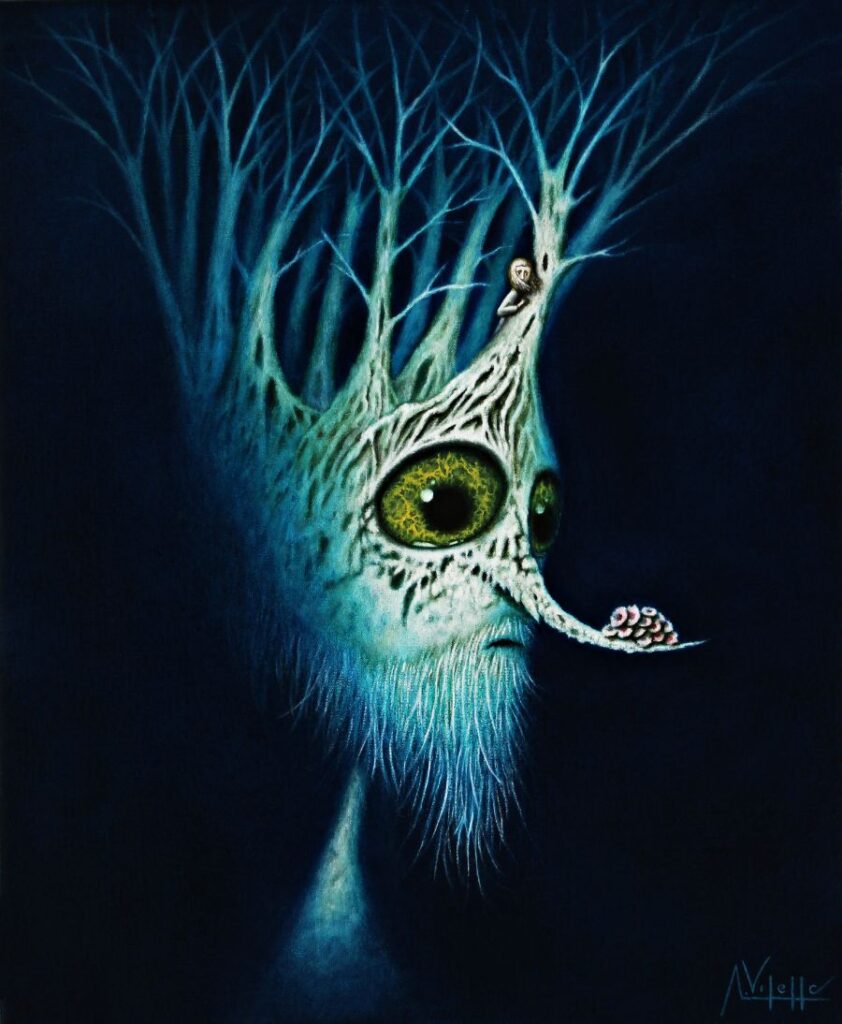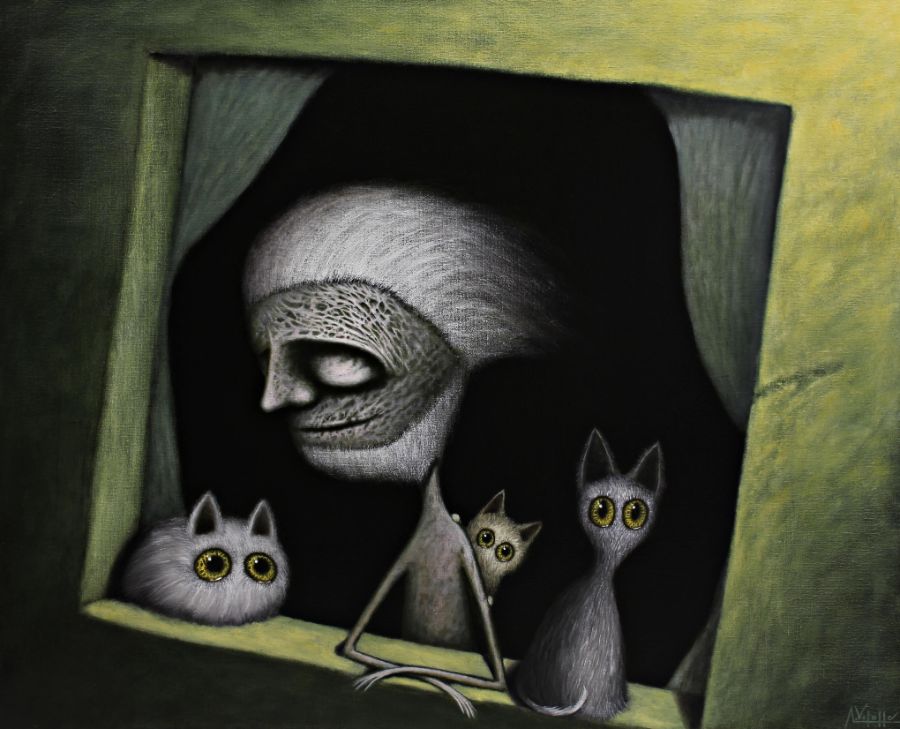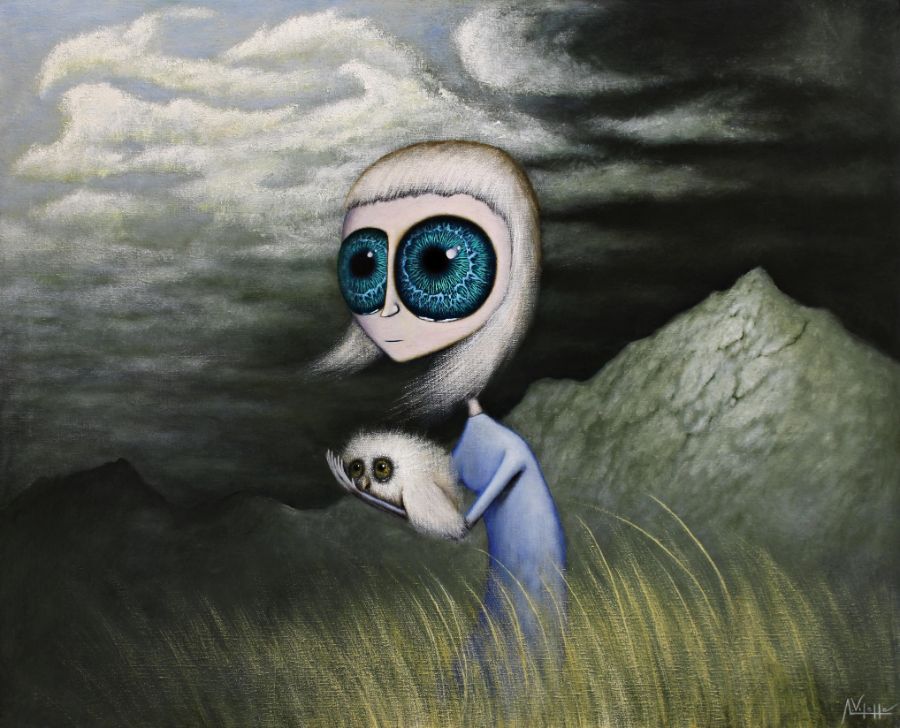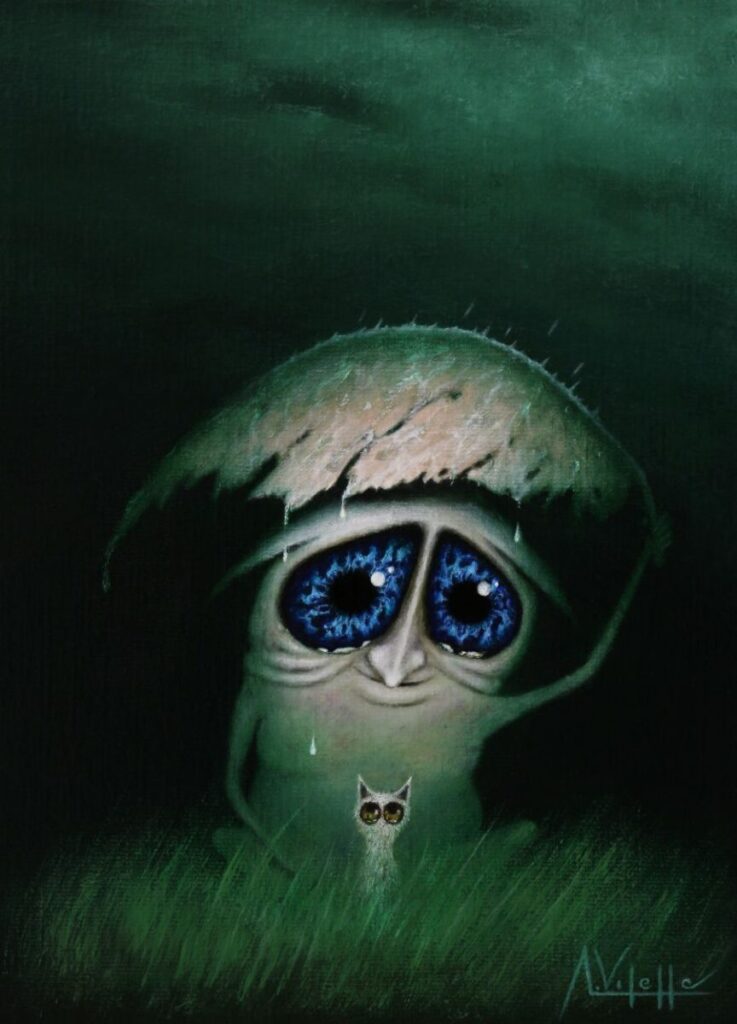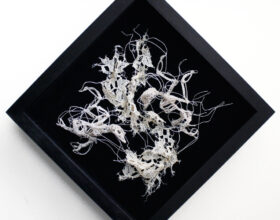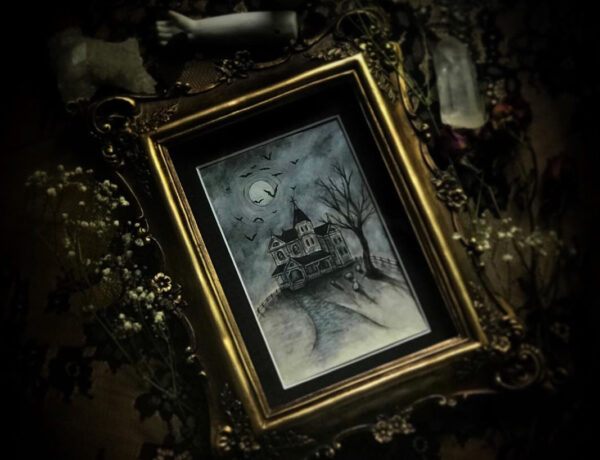There are still a few things in this world that are truly magical, such as the sight of a pearlescent dandelion puff surfing on a lofty breeze. The sensation of feathery snowflakes cascading down upon your eyelids. Or the way that a creative-minded individual can transform a blank canvas into an anthropomorphic, soul-gazing entity. Barcelona-born, Tokyo-based painter August Vilella is well aware of the magic that transpires when his paintbrush takes over, however, ego has nothing to do with it. His instantly recognizable aesthetic can only be manifested when he surrenders to the mysteries of his creative psyche.
Think of August Vilella’s intuitive painting process as a form of artistic meditation. Sure — he holds the brush, but inexplicable forces dictate what imagery comes into being upon his canvases. His surrealistic dream world can only emerge when he is a trance-like zone of creative purity. Tapping into this subconscious state enables Vilella to coax the emotive eyes and relatable essences of his curious cast of characters into existence. Gaze at his creatures – even for a brief minute – and, somehow, it seems as though their tiny hands are extending a cordial invitation. In a metaphorical sense, they encourage the beholder to take a leap of faith right through a porthole of philosophically poignant possibilities.
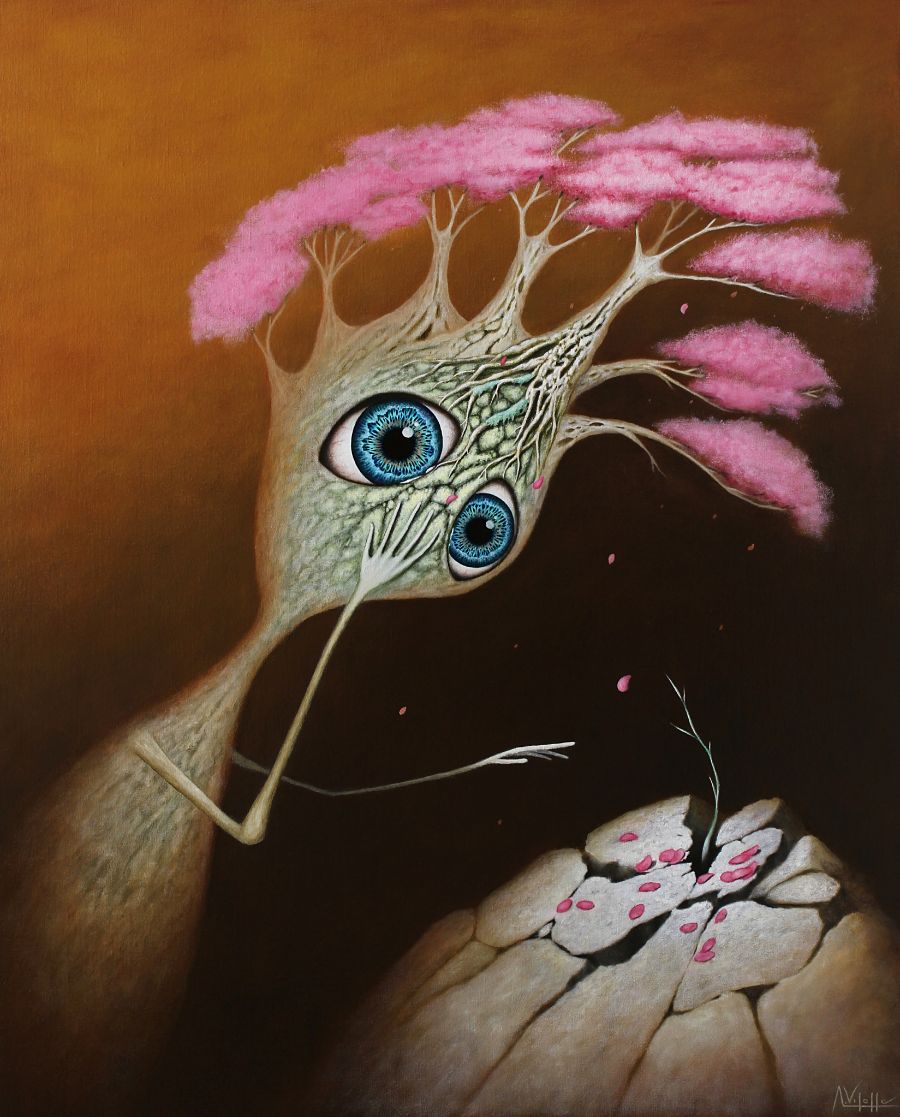
The heart-tugging, soul-soothing imagery that August Vilella produces is, quite obviously, grounded in love. It’s comforting to know that, in spite of the historical turbulence that has been raging outside of our windows, his surreal alterni-verses illuminate the key values that elevate the spirit of all beings. From respect and consideration to endearing gestures of kindness and true blue emotional support, Vilella continues to depict with supreme savoir-faire what so many of us long to experience in this plane of existence. If your soul is in desperate need of a tune-up, the following interview with August Vilella will certainly lift you up in ways that make the rough edges feel a little smoother.
In the past, various people — even highly regarded art experts and gallery owners — told me that many of my career decisions were incorrect. They told me that I should do things differently. I was regarded as a dreamer who should be far more realistic about my goals. Thank goodness I didn’t listen to them and chose to do things my own way.
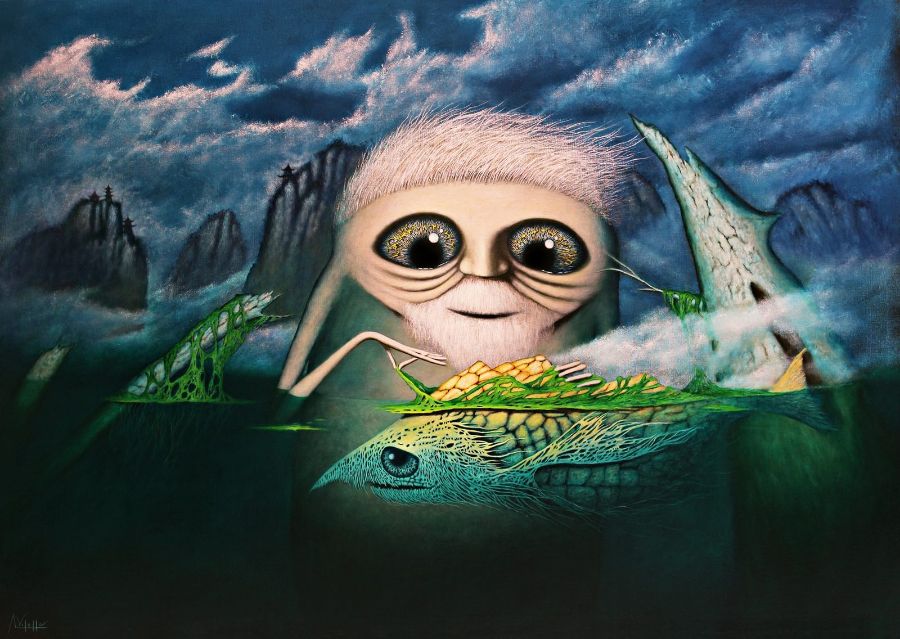
At the age of 27, you felt that pursuing a creative career could elevate the quality of your life. In our culture, however, receiving generous financial compensation for one’s artwork isn’t always a slam-dunk. Why did you believe that you would be among the lucky few who would find great success?
I channel every bit of my soul and my heart into being an artist. When I choose to do something, I’m the kind of person who gives 101%. Otherwise, I don’t do it at all. I believe that it’s a sin to waste time since it’s one of the most valuable things that we have. Art is a part of my being. I feel that when we are born, we have a big responsibility. We must be authentic and true to ourselves. Once we figure out how to be the person we were meant to be, life helps us to fulfill our dreams.
If someone tells you that it’s impossible to achieve something, do you work even harder just to prove them wrong? Or do you set lofty goals just to prove to yourself that you are a force to be reckoned with?
In the past, various people — even highly regarded art experts and gallery owners — told me that many of my career decisions were incorrect. They told me that I should do things differently. I was regarded as a dreamer who should be far more realistic about my goals. Thank goodness I didn’t listen to them and chose to do things my own way.
I apply the same decision-making process that I’ve used for my art career to my most important life choices. I always just follow my intuition, but not to prove to anyone that they were wrong. Listening to my heart has always helped me to successfully achieve my dreams. Feeling fulfilled has always been my number one priority.

I feel that each person who owns one of my paintings actually has a small part of my soul. This gives sense to my existence because the most beautiful thing in this life is to share!
Upon deciding to pursue a professional art career, you honed your oil painting skills for a little over a year. You then sold your very first work of art for $20,000, prior to having agent or gallery representation. How is that even possible?!?
Yes, it was so crazy! A Tokyo art collector bought that painting, “The Call on the Moon”, at the very first art fair I participated in. So many things happened at the same time at the Tokyo International Art Fair, including winning a best artist award. That may have been the first time in my life when I cried because I was so happy. All of that happened because I believed in myself and in my dreams.
I had to take a lot of big risks and make a lot of sacrifices in order to have my first shows in Japan. I even had to leave my apartment in Barcelona in order to finance my stay in Tokyo. But in this life, sometimes taking greater risks is the only way that you can experience far greater rewards.
Are you an exceptional salesperson or was that remarkable $20,000 payday merely just beginner’s luck?
Many people told me that what I experienced was just beginner’s luck. I tried not to listen to them and just kept working. As it turns out, I ended up having many more exhibitions in the same year. I continued to sell my paintings in the same price range. For me, it never was luck, though. It was about destiny and the fruits of my hard work.
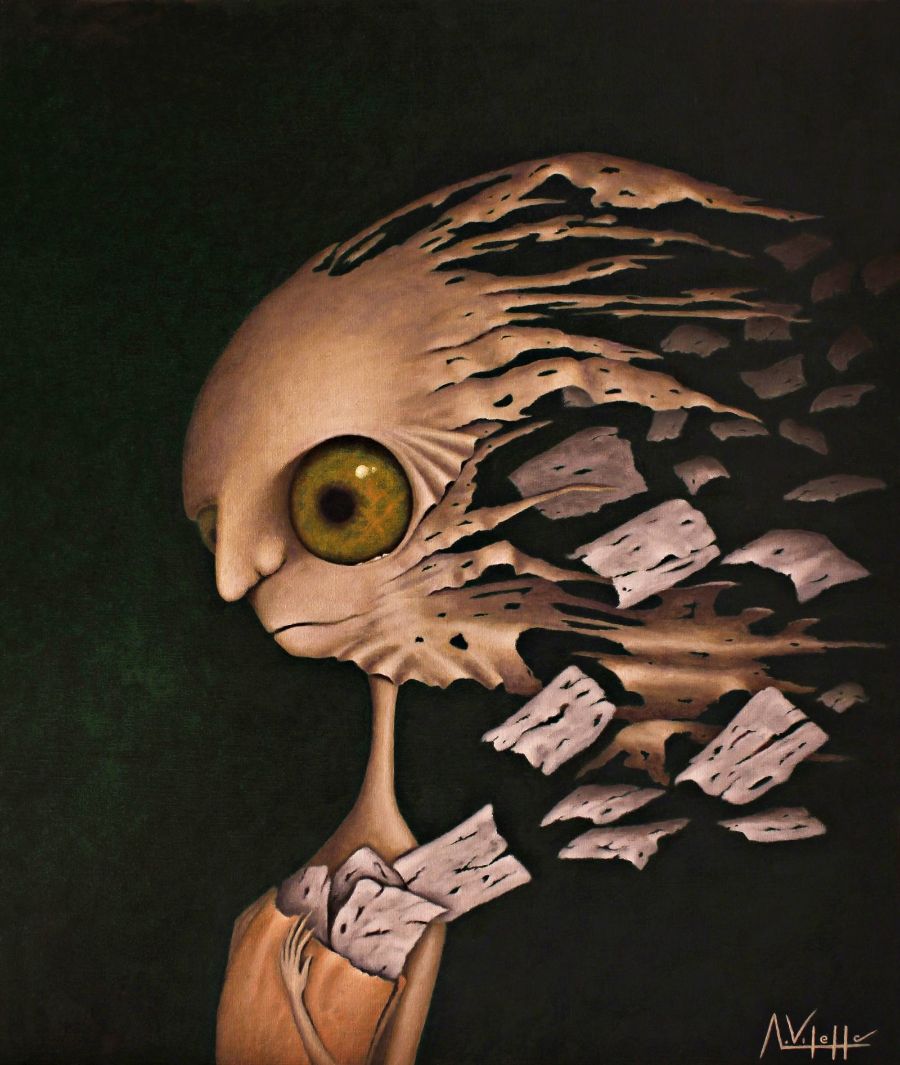
Is your 2016 painting, “The Poet”, still your favorite?
Yes, because it was the last painting that I finished before my very first show. That was before I became a professional artist and was internationally recognized. After creating that painting, my life changed forever. It’s almost as if I was born again. It symbolizes a turning point in my life.
You are now five years into your professional art career. Today, if one of your paintings sold for $20,000, would you still be very pleased? Mildly disappointed? Offended?
I am always happy to sell my paintings. I create different sized paintings, so, they are priced accordingly. Some are more expensive while others are lower in price. I never feel disappointed when I sell my art — even if it just a print. I’m not an artist solely for money. The most important thing to me is to see how my paintings come alive through the reaction in other people’s eyes. I like to make people around the world happy through my art. I feel that each person who owns one of my paintings actually has a small part of my soul. This gives sense to my existence because the most beautiful thing in this life is to share!
In October 1990, supermodel Linda Evangelista told Vogue magazine, “We have this saying, Christy [Turlington] and I… we don’t wake up for less than $10,000 a day.” Do you share Linda and Christy’s point of view regarding the minimum amount of money that you will accept for one of your paintings?
Globally, I work and collaborate with many people, galleries and institutions. My paintings are lower or higher in cost, depending on their size. Out of respect to my collectors, the price of my paintings is always consistent, no matter what part of the world they are purchased. This point is very important for any artist.
Many of our readers are artists who appreciate insight that will help them to make more strategic choices in their own careers. I am quite sure that the one question on everyone’s mind is: “How the bleep can I earn top dollar for my art?!?!” What would you advise them to do?
In many cases, the price of art is very subjective. For me, the most important thing is to feel the price of your art. It’s easy to appreciate beautiful artwork, but how can we know if it’s worth $1,000, $10,000 or $100,000? In my opinion, the artist and their artwork have to be one. If you don’t believe in yourself and in the price that you have chosen for your work, you will never sell it for that amount. You need to generate the same energy toward feeling your art as you do toward its intrinsic value. By doing so, buyers and collectors will believe in you and in your art…and finally in your price. People aren’t just buying your art. They are also buying a little bit of you.
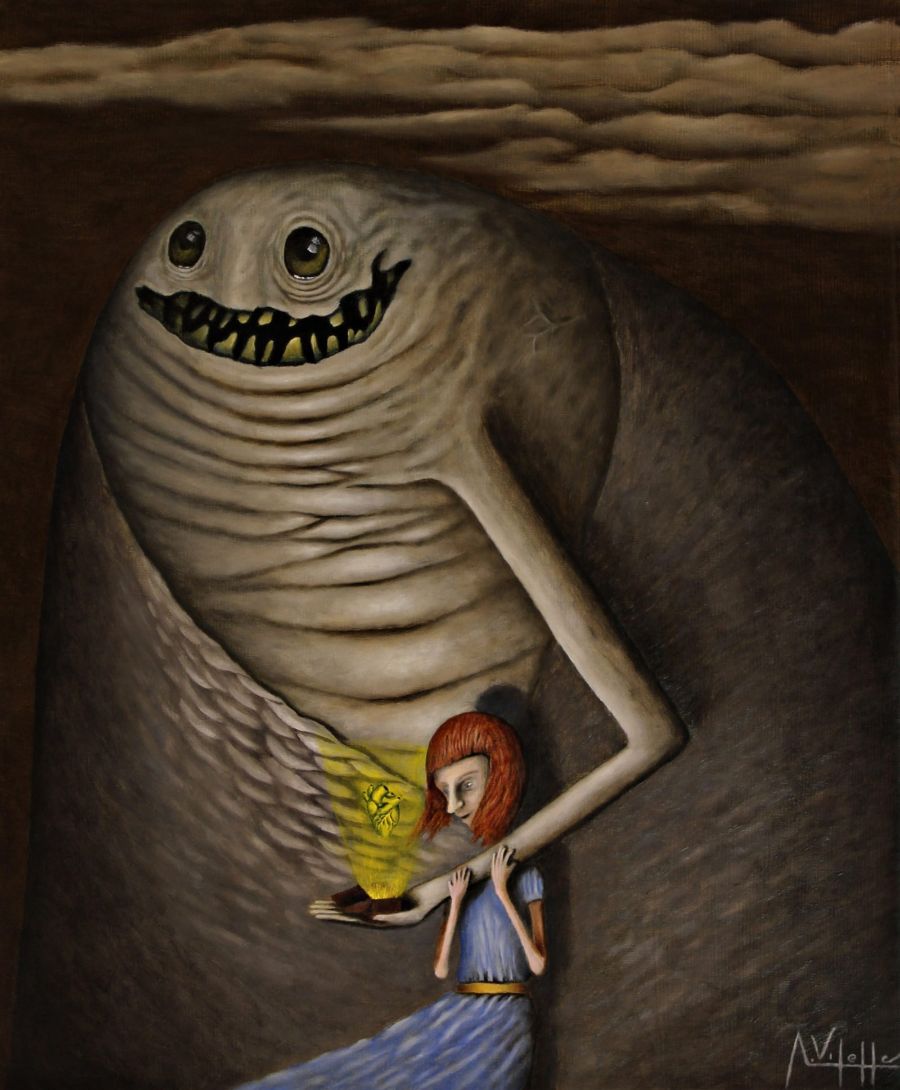
When you do something that you really like, with a material that you connect with, it’s a lot easier to learn faster.
You have always tackled your life goals in an unconventional manner – from the roof down. That approach has worked very well for you in your painting career but has it always been smooth sailing? Have a few roof shingles ever hit you in the head along your journey?
It hasn’t exactly been smooth sailing, hehehe. Of course, people see the result rather than the process. The truth is that I have worked very hard to get where I am today. Yes, of course, I have had difficult moments. I never gave up, though. My philosophy has always been the same — keep the faith and keep working. Life is like roller coaster. Sometimes we’re up, and other times we’re down. What’s most important is to enjoy the moments when we are up, and to be strong when we are down.
Would you advise other aspiring artists to emulate your top-to-bottom career approach? Or do you think that creative people can still become just as successful as you – just as fast! – by methodically following widely accepted art world rules?
It’s difficult to give global advice. I think it depends on an artist’s personality and their character. My approach isn’t the easiest way to work in this industry. I assumed a lot of risks, especially in the beginning of my career. In spite of that, it worked for me. I liked the fact that the bigger the risk that I took, the greater the result, which paved the way for my success. I’ve always been very careful about maintaining that process.
It reminds me of when I was young and went fishing with my father. We could use a small fishing lure to catch many fish throughout the day. Or, we could use the biggest fishing lure in order to catch the largest fish in the river. I have always been the kind of person who selects the biggest lure, even as far back as childhood. My philosophy is everything or nothing! Of course, art world rules work for some people. For me, however, following my own rules and intuition has always been my preference.

Rather than pursuing a formal art education or seeking online instruction, you experimented with oils simply by diving into the deep end. There are far easier mediums to work with, though. Is this another example of you deciding to master something that others told you would be too difficult?
Compared to other mediums, I didn’t start working in oils because I thought they were challenging to master. I was actually attracted to them because I had a more romantic vision of them — the texture, the smell, the history. I soon discovered that oils were the most convenient way to bring my creative perspective to life. When you do something that you really like, with a material that you connect with, it’s a lot easier to learn faster.
Academies, art schools and universities tend to teach students in a way that compromises their passion. Students don’t necessarily have to learn how to use many types of mediums in order for them to find what they like. In my opinion, they could find their passion using the opposite approach – learning what they really like simply by doing.
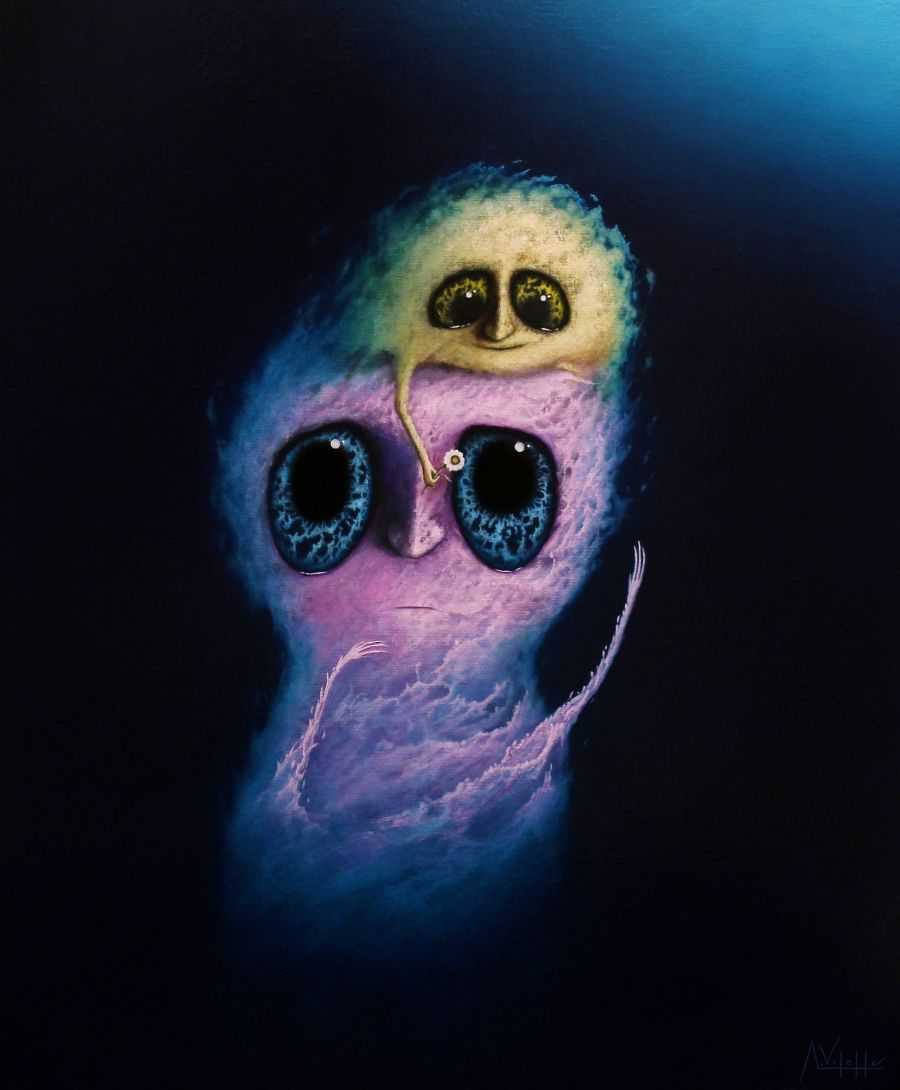
My goal is to imbue my paintings with ambient radiance.
Why are oils so creatively satisfying to you?
At first, oil paints were more of an emotional choice for me. My connection to them was instantaneous. When I touched the canvas with a brush for the first time, I felt like I would paint for the rest of my days. I soon learned that oils are the best medium for my intuitive method of painting and style. They allow me to improvise a lot. Compared to other mediums, the colors are deeper and far more vibrant. That helps me to create very magical and dreamlike atmospheres.
It sounds like you have an out-of-body experience while you employ your intuitive method of painting. Perhaps there is more at play than just your talent?
When I’m in front of a canvas, I feel like I lose control of the brush. In a way, it’s a trance-like experience for me. Thanks to the special texture and behavior of oils, it’s as if the subjects and themes on my canvases materialize slowly but steadily. Think about how clouds in the sky oftentimes morph into elements that are recognizable. That’s what happens to me when I paint.
When I lived in Tokyo for the first time, certain elements began to appear on my canvases that otherwise would not have. A Japanese cherry blossom tree, for example. On other occasions, this has happened to me on a far more metaphorical level.
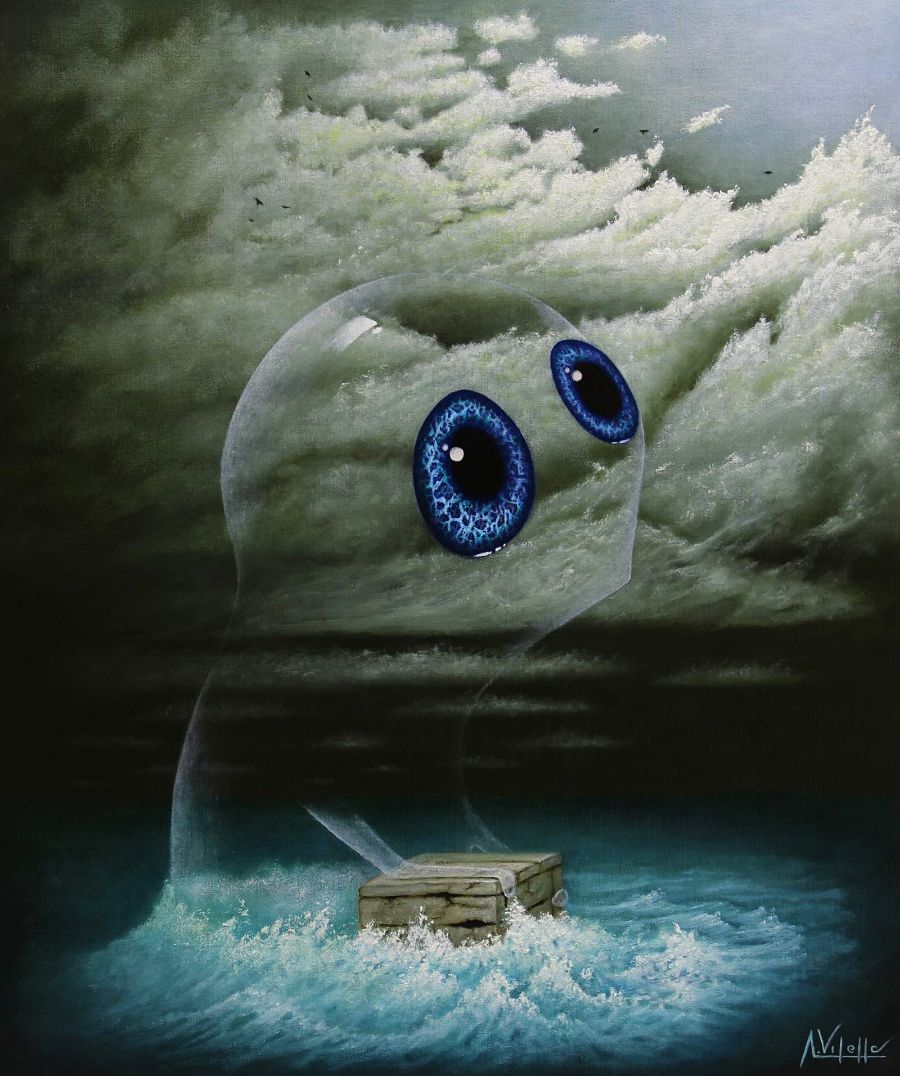
You never really know what your creative efforts are going to manifest upon your canvases?
I only know what my completed painting looks like once I finish my final brushstroke. It’s similar to the experience of reading a book. Each page is a surprise for me. I can only discover what the ending is once I turn to the final page. This concept applies to the outcome of each of my artworks. It’s almost as if I’m not really the person who paints each canvas. Consequently, the artwork doesn’t seem to belong to me. It has a life of its own and is free.
You methodically apply very thin layers of paint and varnish upon your canvases, which is a time-consuming process. Why are those built-up layers so essential to an August Vilella painting?
My diligence is probably a factor. I realize that there is a curious contrast in my art. My imagery and themes emerge intuitively, automatically and unintentionally. On the other hand, my oil painting process – using myriad thin layers – is very refined and systematic.
Once I complete each work of art, I then mix various types of varnishes into a smooth consistency. Finally, each canvas is carefully adorned with layer after layer of varnish. This imparts my paintings with the type of sheen and brilliance that makes classic museum paintings so appealing to look at. My goal is to imbue my paintings with ambient radiance.
Does your improvisational style of art-making always result in a final product that you are happy with?
Not always. In those situations, I normally stop in the middle of the process and start again from zero. I don’t like to paint if I’m not enjoying the process.
Have you ever abandoned a work of art because, for some reason, it fell short of your creative standards?
Yes. I have abandoned works of art during the middle of the creative process. That has only happened when I’ve stepped away from the canvas due to exhibitions or travel. If I’m away from an ‘in progress’ painting for a long time, my creative connection to it can sometimes be lost. It’s during those occasions that I’ve immediately started a new painting from scratch.
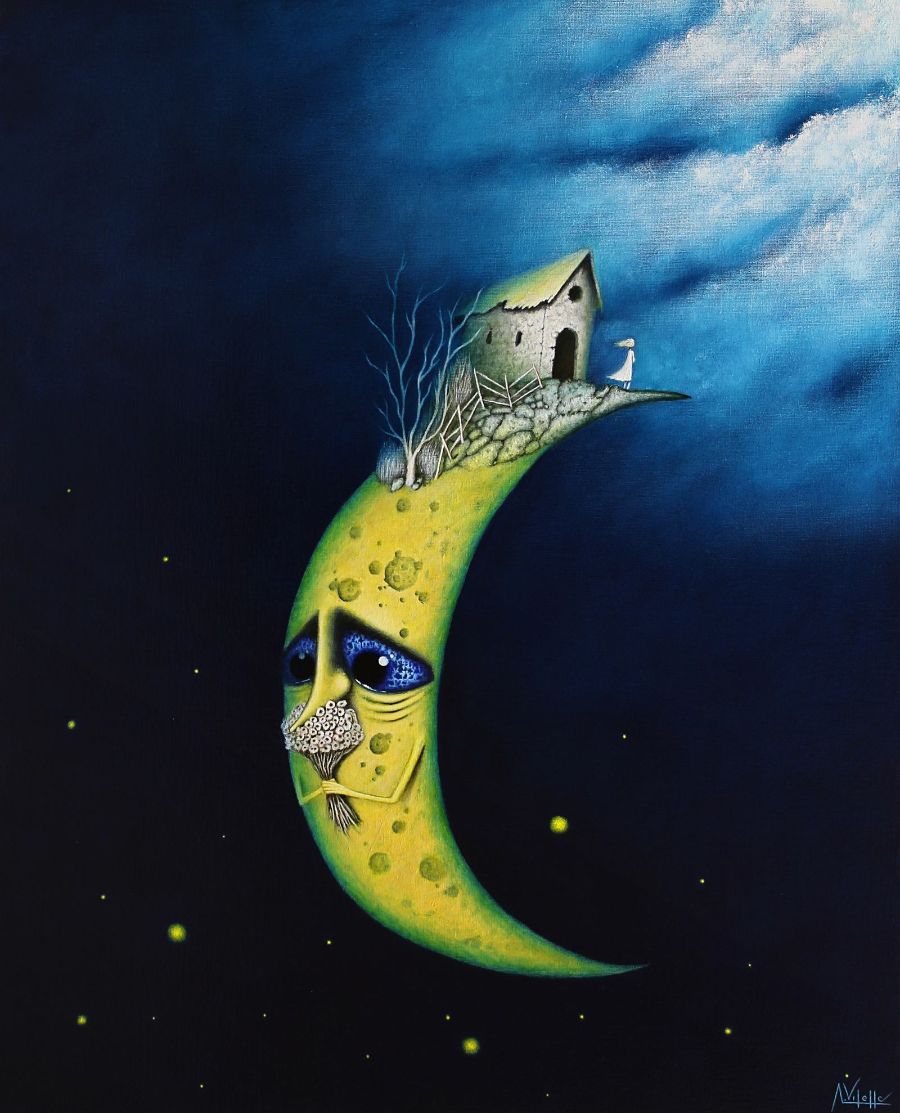
There is a melancholic sensitivity to the whole universe that plays out in my paintings, and especially within the eyes of my characters.
You’ve built your art career around a stream-of-consciousness process. You never rely on preparatory sketches or pencil on canvas. Have you ever considered how your artistic aesthetic might be compromised — or quite possibly even enhanced?!? — if you carefully planned out each canvas?
If I planned each work of art, I believe that they would be far less soulful. They might even seem cold. With each of my canvases, I try to create a one-of-a-kind image that is pure, highly personal, and alive. I hope — through my efforts — that the final product is a little more special. I want people to be able to connect with my paintings in a way that makes their soul feel elevated.
What if a particularly inspiring movie or a wild dream gave you an excellent idea for a future painting? Would you be violating your improvisational process by using that idea?
That has never happened to me since my painting process is different. In order to create one of my paintings, I need to leave my mind blank. As if I’m in a meditative state. I use intuition as my guide. I typically compare my creative process to the improvisational nature of jazz. My process doesn’t work if I implement ideas, intentions or dreams. It has to be pure, otherwise my end result will be forced.
In spite of that, my subconscious mind plays a very important role in the whole intuitive painting process. Sometimes, elements appear on my canvases that are connected to my personal experiences. However, they appear on my canvases unintentionally. It’s like when we’re sleeping and we experience dreams. Sometimes, certain parts of those dreams relate to the experiences that we’ve had at some point during the day.
On average, how long does it take you to complete a painting?
It depends of the size of the painting. On average, I spend between one and a half months to three months on each piece of art that I work on.
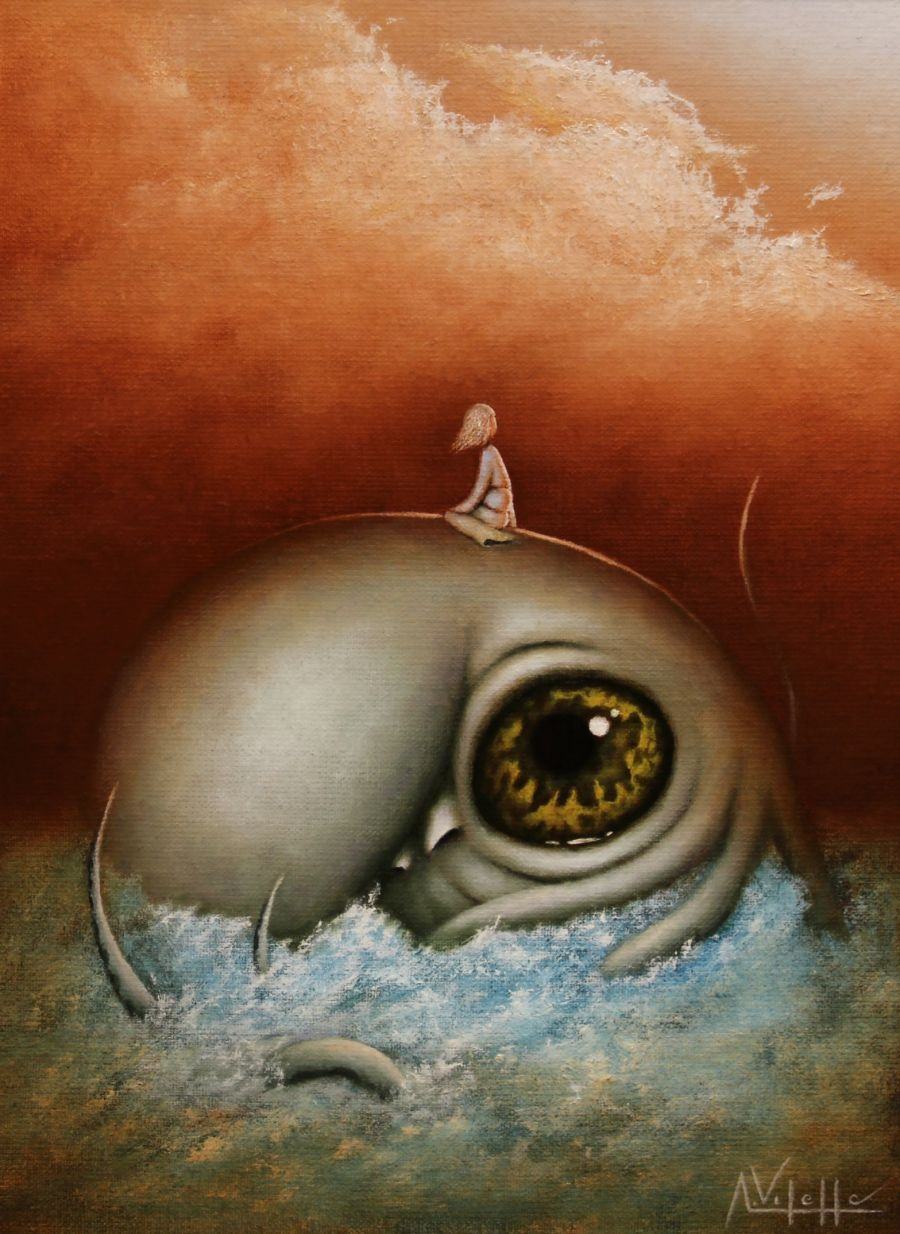
Do you consciously select the palettes for each of your canvases or do the colors manifest organically?
No, the process is more improvised and anarchic. I never know which colors will appear, much in the same way that I never know what characters and themes will manifest. Every time I begin a painting, the final result is always a surprise…even for myself.
The cast of characters that you bring to life on your canvases often look forlorn and contemplative. Do their countenances serve as a metaphor for your perspective of our modern world?
Intuitively-created art is subject to personal connection and the emotions that it triggers. Consequently, my interpretation of the possible meaning behind the paintings that I create really doesn’t matter. Every person who tries to figure out the meaning behind my art can arrive at a different conclusion. Each one of them is completely correct.
There is a melancholic sensitivity to the whole universe that plays out in my paintings, and especially within the eyes of my characters. Their palpable emotion is evident in their gaze, and in the way that they seem to whisper private truths about themselves to the beholder. In effect, my characters are reflective. They help us to connect with our inner spirit.
Your paintings certainly bring the concept of the eyes being a window to the soul front and center. The endearing, oversized eyes of your characters really tug at the heartstrings.
The notion of the eyes ‘being a gateway to the soul’ is certainly reflected within my characters. It’s a universally relatable concept. Appreciating art for its aesthetic appeal is definitely nice. Being able to make a soul connection with the creature staring back at you, however, just feels a little extra special.
Some may regard the empathetic eyes of your canvas characters as your artistic fingerprint. When they manifested on canvas the first time, did you realize that you had created something very special?
When I painted those wide eyes the first time, I don’t recall my reaction very well. The eyes of my characters are memorable, but I believe that my artistic fingerprint is a combination of three key elements. The first hallmark is my intuitive and improvisational technique. The second is employing an elaborate painting process. The final element that makes it easy for people to recognize my art without seeing my signature is the melancholic, philosophical and dreamlike scenes that I create.
Many artists feel elated when they are commissioned to create specific works of art. You, on the other hand, never accept commissions. Is that decision based on your desire to preserve the unique DNA of your paintings?
Absolutely. Each character that appears on my canvas is unique, and each artwork is unrepeatable. These factors turn each of my paintings into an odyssey, which moves into the depths of a vast subjective ocean. The outcome of each is always unknown, different and unexpected. For me, my method of painting is just as important as the actual artwork, itself.
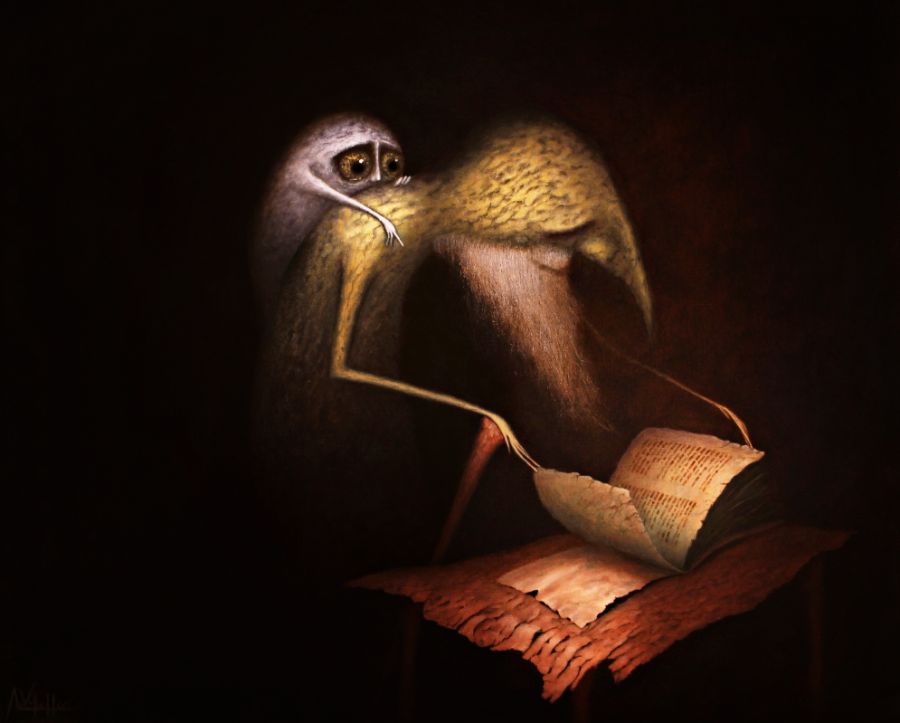
The motor that moves me and gives me the strength to do everything is love — the love of what I do. When you really love what you do and you believe in yourself, nobody can stop you.
Do devotees of your work ever try to convince you to make an exception to your rule? What was the highest commission that you ever declined?
Yes, in the past, that happened fairly frequently. Increasingly, people began to appreciate my intuitive method of painting. They started to understand that it is the method that makes my art a little more special. They also realized that if they wanted to own one of my artworks, they would know that – without a doubt – it would be one-of-a-kind. Absolutely unique, unrepeatable and exclusive.
Is the one-of-a-kind aspect of your paintings the reason why art collectors are drawn to your work? Does the exclusivity of your art endow it with greater value?
Exactly. For them, that is a very attractive point. Owning an exclusive piece of art that will never be duplicated again makes it far more valuable in the art market in the future.
It seems like your goal-crushing personality was amplified by your youth and deep sense of inner confidence. Were you always so sure of yourself and your painting talent?
For as long as I can remember, I believed that in some way, my future would be connected to art. I wasn’t always so sure of my talents, though. Initially, I thought that I would be able to express myself creatively through music, writing or cinema. I actually studied philosophy while attending university and started to write a book. Throughout the years, I was also involved with several music bands.
With painting, however, cultural and language barriers no longer presented an obstacle to my creative expression. I had a hunch that I would end up doing it for the rest of my life. It was like “love at first sight”.
Attaining global recognition as an artist can take many, many years – and even decades – to achieve. At what point in your career was your international presence solidified?
It’s difficult to say since everything happened very fast. Beginning with my first exhibition, I started to sell my artworks around the world and even won several awards. Following my first show, it actually took me few months to finally decide to dedicate myself to art professionally. Working hard to grow my profile in the last several years has enabled me, at this point in my career, to feel relatively stable.
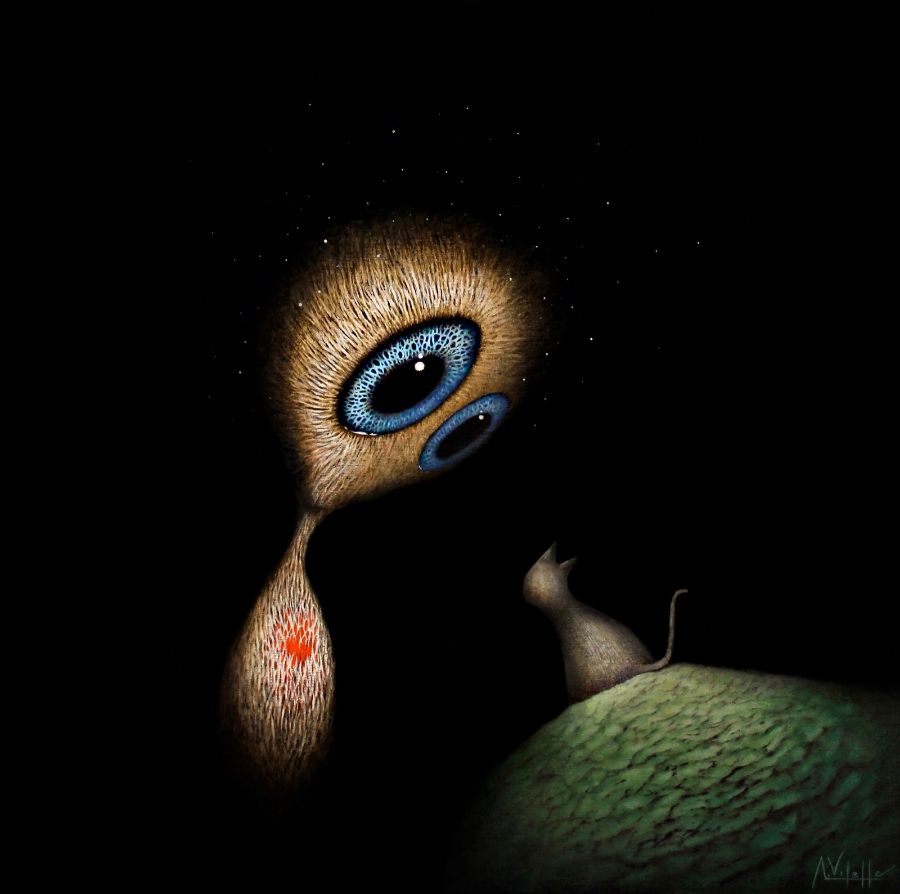
What did you have to do, personally, to achieve the degree of art world prominence that you currently enjoy?
I was 100% focused on becoming a successful artist, even at the very beginning of my career. Finding opportunities and contacts truly consumed my days and nights. I promoted myself online and attended as many events and exhibitions as possible, including the shows of other artists. This made a difference, at least in my case. When I started to travel around the world for my shows, I met so many people. That gave me a very rich cultural and experiential background that helped me with my future paintings. It also enabled me to understand how the whole art market (managers, galleries, etc.) really works. These factors helped me to develop a more specific strategy. I figured out how to do things in my own way and make the very best decisions.
Does maintaining your presence in the art world feel like a job or is it a labor of love?
The motor that moves me and gives me the strength to do everything is love — the love of what I do. When you really love what you do and you believe in yourself, nobody can stop you. In this life, the most important thing is not what you wish for, but how intensely you wish it! This makes the difference between reaching your dreams or not.
Do you indulge in any guilty pleasures that keep your creative juices flowing?
I don’t actually need anything special to help trigger my creativity. My requirements are fairly simple. First and foremost, I need a quiet environment. Then, I just put a white canvas in front of me, I leave my mind blank and I just try to be myself. I paint in a meditative or altered state of consciousness, kind of like a trance. I sometimes use special music or just complete silence to enhance or enrich this state of mind. When I start a new painting, my only goal is to enjoy the process. The first person I’m painting for is myself, followed by my future audience.
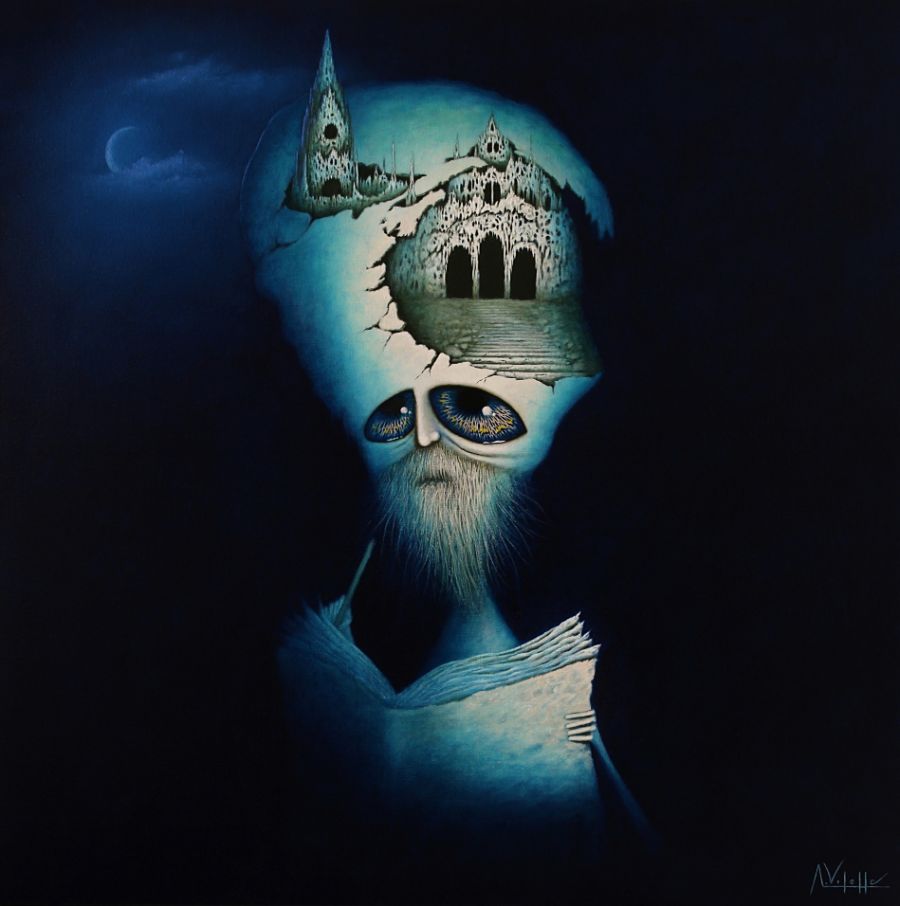
What is the most surprising or weirdest thing that has happened to you in your artistic career so far?
Many years ago, before I became a professional painter, I was working in tourism at the temple of La Sagrada Familia of Barcelona. At the same time, I was writing a big philosophical book, I had two music bands, and I was painting. I was so confused and lost because I was juggling too many projects yet still trying to do my best in all of them. It was so hard to figure out which path to choose. I had many sleepless nights because I feared that I was wasting my life.
One day while I was engaging with tourists, one of them suddenly asked me if I painted. She then asked if my name was August. After hearing my response, she hugged me while crying. I had no idea how this stranger knew my name or the fact that I painted. I hadn’t yet launched my artistic career. Only the people closest to me may have seen some of the paintings I posted on my personal Facebook account.
It turns out that the woman randomly discovered my personal Facebook account the night before her flight to Barcelona. She said that her soul connected with the characters in my paintings. It was almost as if they helped her to forge a deeper connection with herself. It was a complete coincidence that she just so happened to run into me the following day. She wondered if it was a sign for me to pursue a full-time career as an artist.
Through her meeting with you, do you think that some sort of cosmic canvas porthole was opened?
It seems like she was the conduit for a message… from somewhere. That was the day that my life had to change. I know it sounds bizarre, but something inside me stirred. It’s like someone sent her to give me the push that I needed to change my life forever.
I immediately left my job where I was working five years. I also left the two bands I was involved with and stopped writing my book. From that moment forward, I devoted myself entirely to painting. My boss, friends and many others thought that I was crazy for making such a drastic and irrational decision based on what a stranger told me. In spite of that, I felt that I made the correct decision and focused exclusively on painting. That ended up being the best decision of my life.
Just a few months after that, I secured my first exhibiting opportunities in Japan. That is where I sold my first works of art and won an award, both of which helped me to launch my professional career. I cannot help but believe that — through that woman — my own characters sent me a life-altering message. Maybe they wanted me to take the correct career path so that they could be brought to life and spread around the world.

Let’s imagine that you’re finally at a place in your life where you’ve experienced all of the creative fulfillment that you could have ever hoped or dreamed of. You are now in a position to pursue any type of art… purely for the joy of creating. What would you choose and why?
I would want to keep growing as an artist and explore other projects and artistic techniques. I’d love to see my canvas characters and their stories reach a far wider audience – one that spans well beyond that of art lovers. Tim Burton has done that kind of thing with great results. Each one of my paintings and characters exists in a separate world. I can imagine the most incredible movies, books, etc. emerging from each microcosm.
I’ve noticed one interesting thing when I engage with people at my art shows. Those who initially have no deep interest in art ultimately end up feeling a special connection with my works. They often want to know more about them. It seems like the intuitive nature of my subconscious painting process really resonates with everyone at a primitive level.
During my exhibitions, people often share so many diverse and incredible thoughts and interpretations of my paintings. Some find hidden meanings or draw philosophical conclusions based upon elements of their own dreams or past experiences. I have had the great fortune of witnessing how my artwork has helped people to connect with themselves. It makes me wonder if it is my responsibility or even my duty to take my art to another level.



